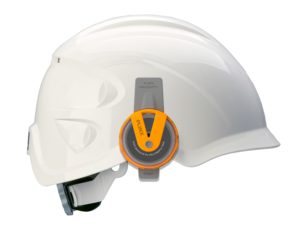construction
How safety systems can aid social distancing in construction
Plinx is a construction safety system that manages the proximity of workers to hazards. The system protects construction workers and employers by increasing awareness of hazardous activity, equipping construction sites with tags which provide an accurate, up-to-date record of hazard and worker location.
SHP spoke to Tommy Williams, Plinx Founder and CEO, to find out more about the system, how it works and how it has been adapted to help social distancing in construction during the coronavirus pandemic.
Why do construction firms use safety systems?
 Tommy Williams (TW): “Safety systems help to prevent injury or fatality on construction sites, protecting the workforce from harm and in turn improving employee satisfaction and preventing costly project delays.
Tommy Williams (TW): “Safety systems help to prevent injury or fatality on construction sites, protecting the workforce from harm and in turn improving employee satisfaction and preventing costly project delays.
“Plinx consists of a range of tags that are deployed around the construction environment that provides a notification when users are approaching hazards. The early warning system prevents injury from contact with hazards and the spread of contagious disease. The Plinx system captures and stores rich location and proximity information that protect employers from prosecution or reputation risk by providing a robust audit trial.”
What tags make up the Plinx system and how does it work?
(TW): “The Plinx system consists of three different tags which connect together using a blend of wireless technologies. Plinx’s proprietary wireless technology enables the tags to connect together over long distances and deep within buildings or tunnels. Operatives are protected by their TeamTAG, a small tag that connects to a construction helmet, which monitors their location in relation to HazardTAG’s which are positioned on the top of a cone or MachineTAG’s which are temporarily connected to plant equipment.”
It’s not just about protecting people is it?
(TW): “No, Plinx tags connect together to protect people, plant and places. As well as protecting people the system can prevent misuse of equipment, plant equipment from entering restricted zones marked by hazard tags, loss of equipment or speeding amongst other things.”
Does the system require an internet connection, or us it suitable when underground or for us in remote locations?
 (TW): “Plinx deploys a local wireless network which covers the working area, active tags connect to the network so that real-time safety information can be retrieved and site management can react to incidents before they escalate. In most cases it is preferred that the system is connected to the internet at the site office to allow remote access, but it is not required for full local functionality.”
(TW): “Plinx deploys a local wireless network which covers the working area, active tags connect to the network so that real-time safety information can be retrieved and site management can react to incidents before they escalate. In most cases it is preferred that the system is connected to the internet at the site office to allow remote access, but it is not required for full local functionality.”
How can site managers use the data gathered by the Plinx system to improve site safety?
(TW): “The Plinx system provides a detailed breakdown of each incident allowing site managers to be able to perform root cause analysis of the incident and improving process or protection.”
How has the system been adapted and evolved to help construction firms as workers return to sites following the coronavirus lockdown?
(TW): “Plinx has identified that their proximity technology can be used to effectively manage social distancing. Plinx’s TeamTAG’s provide accurate 360degree social distancing to construction workers, tracking the amount of time operatives have spent within a 1-2m zone. The Plinx Intel platform provides a heat map which shows ‘hot spots’ and a contact tracing map which enables site management to safely contain and reduce the impact of an outbreak.”
How safety systems can aid social distancing in construction
SHP spoke to Tommy Williams, Plinx Founder and CEO, to find out more about the system, how it works and how it has been adapted to help social distancing in construction during the coronavirus pandemic.
Ankit Kumar
SHP - Health and Safety News, Legislation, PPE, CPD and Resources Related Topics
New cladding fire risk identified and could be “tip of iceberg”
Company fined £450k and director and site manager sentenced following death of labourer
Huge step towards inclusive PPE as industry body promises to ensure provision

 Tommy Williams (TW): “Safety systems help to prevent injury or fatality on construction sites, protecting the workforce from harm and in turn improving employee satisfaction and preventing costly project delays.
Tommy Williams (TW): “Safety systems help to prevent injury or fatality on construction sites, protecting the workforce from harm and in turn improving employee satisfaction and preventing costly project delays. (TW): “Plinx deploys a local wireless network which covers the working area, active tags connect to the network so that real-time safety information can be retrieved and site management can react to incidents before they escalate. In most cases it is preferred that the system is connected to the internet at the site office to allow remote access, but it is not required for full local functionality.”
(TW): “Plinx deploys a local wireless network which covers the working area, active tags connect to the network so that real-time safety information can be retrieved and site management can react to incidents before they escalate. In most cases it is preferred that the system is connected to the internet at the site office to allow remote access, but it is not required for full local functionality.”